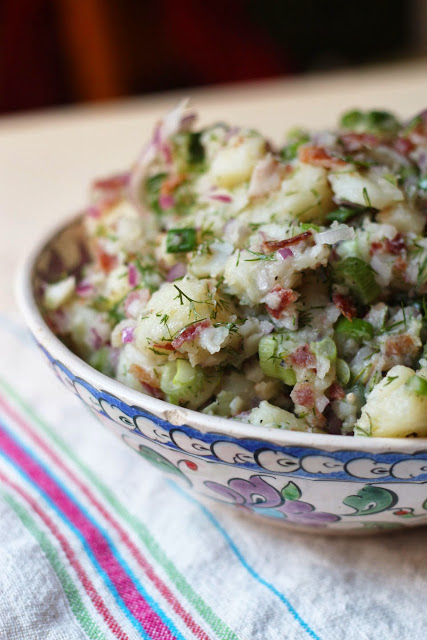26 April 2016
Sssssh. Don't wake them. And, yes. It is still a lot of concrete.
We face north. Most of the slab is shadeland. Deep shadeland. Sun arrives first on the left side from the east (to the right of the picture) for a few hours in the morning, and then the tall townhouse casts its long shadow. The back, earthen part, is where most of the sun is in these spring and then summer months. In winter the sun does not clear the building and it is all full, full, utter, complete, intense, saturated shade (sound-of-razor-slashing-at-wrists).
4 March 2016
The beds around the edges of the central vegetable plot are planted with perennials and a few shrubs. The idea is to 1. make it pretty and 2. attract pollinators and beneficial insects. I have not amended these beds with calcium to raise the pH - the central bed is the one stuffed with crushed oyster and egg shells to sweeten the soil for crops (if you missed that drama, read this post).
I inherited day lilies, which I divided last year, as well as a magnificent clump of Solomon's seal, which I also divided, and ditto violets. The unwelcome volunteer seedlings are something else. They will have their own post.
To these edge-beds last fall I added the plants that moved with us from the Harlem terrace in August, 2015: blueberries, one of the black raspberries, asters, calamintha, Agastache 'Acapulco,' Heuchera villosa, nettles (!) and swamp milkweed (Asclepias incarnata).
Swamp milkweed shoots
Then I acquired - in an indigenous fall planting fit - ironweed (Vernonia novaboracensis), Veronicastrum virginicum, Anemone virginiana (thimbleweed), some Solidago and sweetfern (Comptonia peregrina), and agastache from the nearby and inspiring Gowanus Nursery. I also planted some sunchokes/Jerusalem artichoke (Helianthus tuberosus) rhizomes that I bought at Key Foods on Henry Street. They have come up (back, right - ugly fence and neighbor-privacy). And I was gifted echinacea, aquilegia, and clematis. And there was an impulse buy of angelica, for drama.
Ironweed shoots
This spring I planted (from Brent and Becky's) Liatris spicata, Lilium longiflorum, and gloriosa lilies for the back fence.
In the pots on the slab there are Callianthus murielae (peacock flower), lilies, hostas-from-Harlem, some dead hardy begonias, Heuchera villosa (which dates from Cobble Hill and the original 66 Square Feet, along with one of the blueberries and the black raspberries). And the other beloved black raspberry; both plants nearly died last year when we went away and they were not watered.
The pots on the slab need work. More shade plants. I'm thinking annuals. And I may try turmeric and ginger. A seven foot reclaimed-oak table will be on its way from Akron, Ohio, this Monday, and the stone-top table will move off to the side. A beautiful umbrella is waiting to be unpacked. It will help with dinner time privacy and morning sun. And I may gravel that path around the vegetable bed.
I haven't even mentioned the little sunny patch of garden on the south side, which owes a lot to GRDN and my local gardener-friends Julia and Kirstin, who gifted me garden thinnings. The view from the bedroom is so much better. And soon our third floor neighbor will start his stoop garden, again. So that will be pretty, too.
Hey. I could have worse habits. The garden serves as a lab and inspiration. And some of it is a genuine tax write-off: for my freelance garden writing I prefer to have first-hand experience of the subject and the more I grow the more I know (or realize I don't know). Any garden is a good mentor, and a better therapist.
_________________________




















































